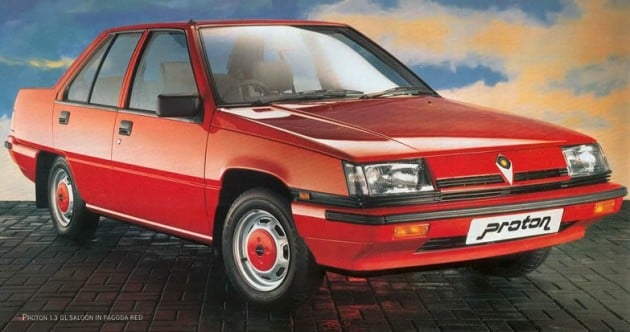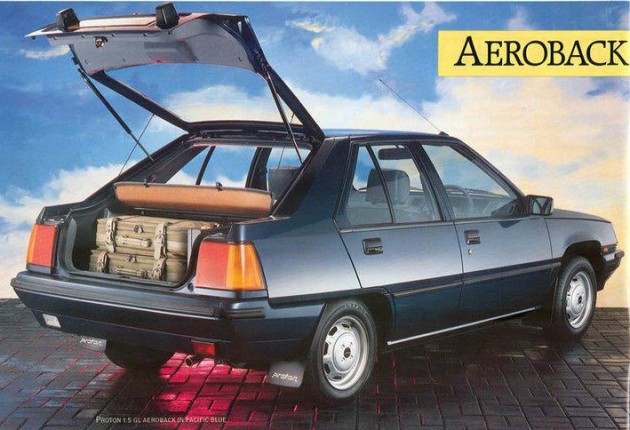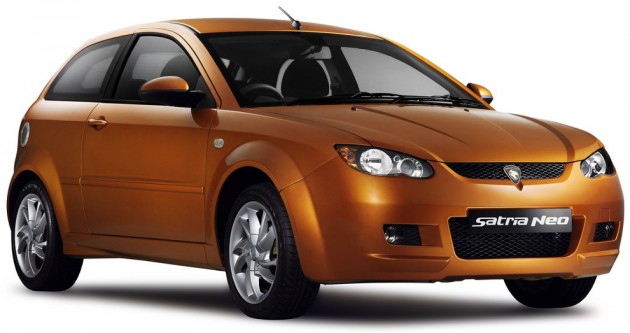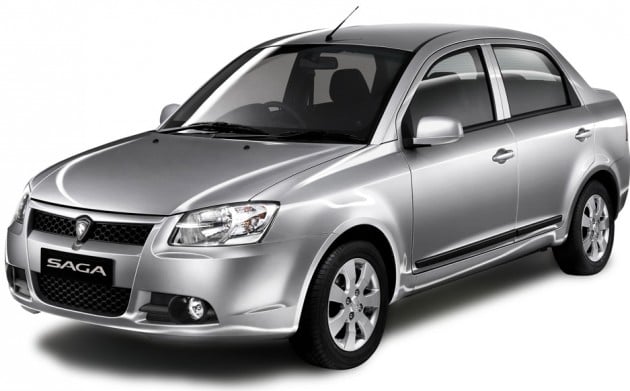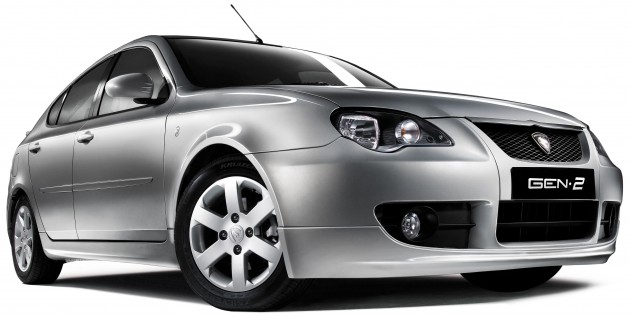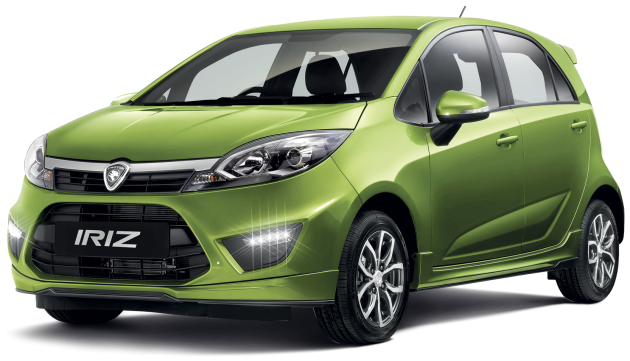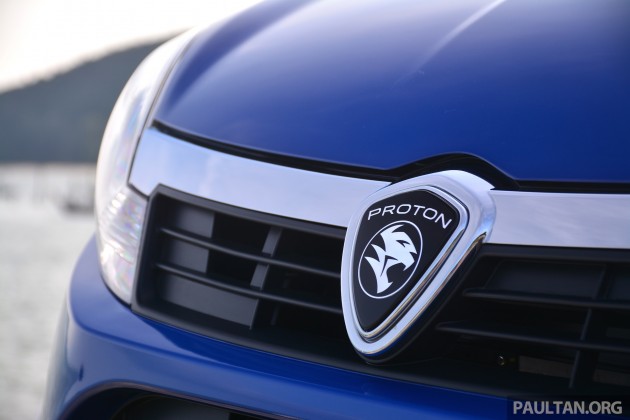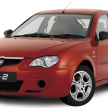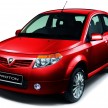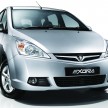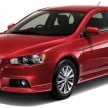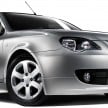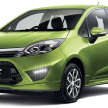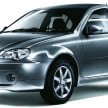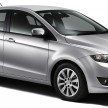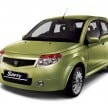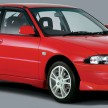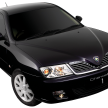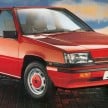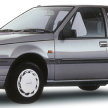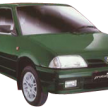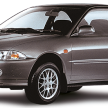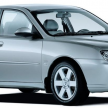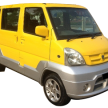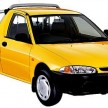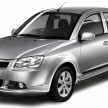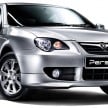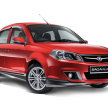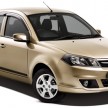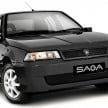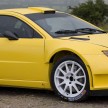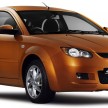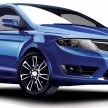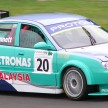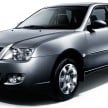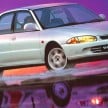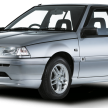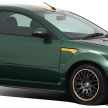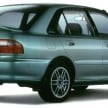This year, Proton is embarking on a new brand campaign, ‘My New Proton,’ a no-stone-unturned transformation covering its products, sales and aftersales strategies, designed to boost confidence in its products as well as to persuade the public to try its new cars. There’s even a bold logo redesign to go with it, along with the slogan, “It’s in the Drive.”
In conjunction with the campaign, the national carmaker has released a series of new advertisements aimed at tackling the longstanding perception held by many – that Proton has not learned anything in the past 30 years of its existence. The company argues that in fact, that its experience in building cars for so long has taught it so much.
So where does Proton stand as it turns 31? Well, 2016 is a new turning point for the company. Yes, it does seem like that every year, but this year it is especially true – it is replacing two of its core products (B-segment Persona and budget-oriented Saga) and reintroducing its flagship Perdana six years after it left the D-segment sedan market.
On top of that, it is also in the midst of developing a new engine family that utilises direct-injection and turbocharging, among other technologies. Proton knows what is at stake, and if it drops the ball this time, it will be that much more unlikely for it to finally become a healthy, sustainable business it needs to be – so it knows it has to deliver on these fronts.
But to understand what it is up against and what it needs to do to succeed, we have to look back at its history to recognise the successes and missteps that have turned Proton into the ambitious, fiercely independent company we know today.
We all know where it started – in 1985, then Malaysian prime minister, now Proton chairman Tun Dr Mahathir Mohamad unveiled the Saga, based on the front-wheel drive Mitsubishi Lancer sedan. Power came from a 1.3 litre 4G13 carbureted eight-valve, four-cylinder engine, mated to a five-speed manual transmission.
Two years later, the Saga gained a revised Magma engine, a more powerful 1.5 litre 4G15 variant, a three-speed automatic option as well as a notchback bodystyle called the Aeroback, unique to the Saga (Mitsubishi only ever produced a hatchback version of the Lancer, badged as the Mirage). A black special edition 1.5 litre Aeroback model was badged the Saga Knight, which should ring a bell for some of you.
It was also around this time that Proton began exporting its cars overseas, with sales of the Saga in the United Kingdom – there badged simply as the Proton 1.3 and 1.5 – kicking off in 1989. Back home, the Saga was updated in 1990 with 1.3 and 1.5 litre 12-valve engines, larger grille openings, ‘Megavalve’ script imprinted on the rear windscreen and a ‘Saga 12V’ badge. Safety kit was also improved with a third brake light and rear three-point seat belts.
The year 1992 brought big changes to the Saga, with a substantial revision to the car’s looks. It was named the Iswara – after a species of butterfly native to South East Asia – and retained the Megavalve’s powertrain, transmission and sedan and Aeroback bodystyles, remaining in production in the same basic form until 2001.
Export versions of the Iswara were sold later that year, featured multi-point fuel injection (hence the MPI badging) and a catalytic converter to comply with Euro 1 emissions regulations. Just 200 units of these models were offered in Malaysia with Clean Air Regulated Emission System (CARES) badging, available only in green as a sign of environmental consciousness.
Proton’s lineup grew twofold in 1993 – instead of replacing the then eight-year-old Saga, its next car, the Wira, was designed to sit above it in the company’s lineup, despite also being based on the Lancer.
Again, the same carbureted 1.3 and 1.5 litre 12-valve carbureted engines were carried over (fuel injection was fitted to these engines in 1999), along with five-speed manual and three-speed automatic transmissions. However, the Wira was also launched with a 1.6 litre 4G61 16-valve fuel-injected engine, mated to a four-speed automatic.
The following year, an Aeroback bodystyle was added to the range, while a three-door hatchback model called the Satria – based on the Mitsubishi Mirage – was introduced at the tail-end of 1994.
A big year for Proton followed in 1995 – it kicked off the year in style by unveiling a new flagship sedan called the Perdana. Based on the Japanese-market Mitsubishi Eterna, a close relative to the Galant, it was powered by a 2.0 litre 4G63 single-cam four-pot engine mated to either a five-speed manual gearbox or a four-speed electronic automatic transmission (which used fuzzy logic to adapt to the driver’s driving style); the manual was dropped the following year.
The Wira was also given a facelift in 1995, consisting of an updated grille design and slimmer tail lights with clear indicators. Also introduced was the 1.8 EXi, featuring, as the name suggests, a bigger 1.8 litre 4G62 engine with both manual and automatic options.
To cap it all off, Proton produced a limited edition variant of the Wira 1.8 EXi to satisfy FIA rally homologations, featuring a twin-cam engine, a manual transmission, a large rear spoiler, Recaro seats and a Momo steering wheel. Just 2,450 units were built, with another 50 stripped-out versions offered for a proper race car experience.
In 1996, Proton introduced the sportier two-door Putra, based on the Mirage coupé and powered by the twin-cam version of the Wira 1.8 EXi’s 1.8 litre engine and equipped with the same Recaro seats and Momo steering wheel. The Satria was also facelifted that year – gaining the Wira’s new grille and a completely revised rear end design – while the Wira received a 2.0 D variant powered by a 2.0 litre 4D68 naturally-aspirated diesel engine.
That year also saw the unveiling of Proton’s smallest car, the Tiara. Not based on any Mitsubishi vehicle, the Tiara was in fact based on the Citroën AX – by then already 10 years old – and was available only with a 1.1 litre four-pot engine and a five-speed manual transmission. Sales were poor, and Proton discontinued production just four years later.
Also occurring in 1996 was the acquisition of the British sports car maker Lotus, and Proton used it to full effect, debuting the sportier Satria GTi and Perdana V6 in 1998 – both featuring Lotus-tuned ride and handling and were advertised prominently as such.
The GTi – now highly sought-after – was powered by the ubiquitous 1.8 litre twin-cam engine and five-speed manual gearbox combination, and obtained a purposeful body kit, fender flares, Recaro seats, a driver’s airbag and ABS to set it apart from the cooking models.
Meanwhile, the Perdana was given a shot in the arm with a 6A12 2.0 litre twin-cam V6, a bodykit, larger 16-inch wheels, leather seats and a revised steering wheel design. Also in 1998, the regular four-pot Perdana was given a Commonwealth Games Edition variant to commemorate the games held in Bukit Jalil that year – just 200 units were made, in white only and with a manual transmission.
The turn of the millennium marked a new chapter for Proton, as it introduced its first in-house-designed car. Based on a Mitsubishi-Volvo joint venture platform that also underpinned the Mitsubishi Carisma and Volvo S40, the Waja was available from launch with a Mitsubishi 4G18 1.6 litre 16-valve engine and five-speed manual and four-speed automatic transmission options. Also introduced on the Waja was Proton’s then-new logo, a shield-shaped insignia with an inset tiger head – the basic design is still used today.
More special edition Wira models were introduced in 2000 – these being the 1.6 litre Thomas Cup (blue sedan, introduced in conjunction with the 2000 Thomas Cup held in Kuala Lumpur) and Millennium Edition (green Aeroback) variants. These were distinguished by a bodykit and new 14-inch six-spoke alloy wheels.
In 2001, Proton launched its first MPV, the Juara. Based on the Mitsubishi Town Box Wide, a larger version of the Town Box kei van, it was a six-seater van with dual sliding doors, powered by a 1.1 litre 4A31 four-pot – located under the driver’s seat – and a four-speed auto. As with the Tiara, the Juara’s sales performance was dismal due to its unconventional looks and layout, and production ended just two years later.
That year was also the year that Proton began discontinuing production of its legacy Mitsubishi-derived models, starting with the Putra – although the company reintroduced it in limited numbers in 2004 to clear remaining stock. Meanwhile, the company added a higher-end Waja 1.6X model that included a driver’s airbag, ABS, leather upholstery, auto air-con and a woodgrain interior.
The Iswara Aeroback also saw the introduction of a silver Special Edition 1.3 litre manual model, featuring a bodykit, a new grille, clear lens reflector head- and tail lights, twin rear spoilers, 14-inch alloy wheels and a larger exhaust system. Inside, sportier seats, a new gearknob and a new instument cluster design were added on.
Proton ventured into the pick-up market next with the launch of the Arena in 2002. Based on the Wira – with a new front bumper, body side mouldings and a bed section designed entirely by Proton – the Arena was a two-door, two-seater offering powered by the Wira’s 1.5 litre engine and five speed manual gearbox. The ute catered more towards the Australian market, where it was badged the Jumbuck; indeed, it was a modest sales success there, selling more than in its home market.
Proton also participated in the British Touring Car Championship (BTCC) that year, fielding the Waja (badged as the Impian in the UK market). British drivers David Leslie and Phil Bennett competed in the first two seasons – with the former clinching a number of podium finishes in the first year – while South African Shaun Watson-Smith and Malaysia’s very own Fariqe Hairuman drove for the team in its final season in 2004.
A quiet year followed in 2003, with the biggest product introduction being a thoroughly revised version of the Iswara Aeroback. Along with new front and rear fascias and a revamped minimalist interior design, the Iswara name was dropped, so the car was once again known simply as the Saga. The ancient 1.3 litre carbureted 12-valve engine and five-speed manual transmission were carried over, but was tuned and fitted with a larger exhaust system to generate more power.
The Perdana V6 also received a facelift that year, gaining new front and rear bumpers, an Alfa Romeo-style grille, new five-spoke alloy wheels and revised tail lights. The interior received a new steering wheel, leather seat and instrument cluster design, plus new metallic trim pieces.
Also introduced was a more powerful Waja 1.8X, featuring a Renault-sourced 1.8 litre F4P four-cylinder VVT engine mated to a four-speed automatic. Equipment levels were nearly identical to the 1.6X, with the exception of 16-inch alloy wheels and a passenger airbag.
The year 2004 saw the launch of the Gen.2, a new notchback that introduced a number of firsts for Proton. It was the first car to be built on Proton’s own platform, powered by the company’s own engine – a 1.6 litre CamPro engine, developed in conjunction with Lotus – and built at its new factory in Tanjung Malim.
Many praised the contemporary and stylish design as well as the Lotus-tuned handling, but the Gen.2 was let down by subpar interior quality, a number of ergonomic issues (including a lack of rear headroom due to the sloping roofline) and a now-infamous dip in mid-range torque.
At the same time, the Wira Aeroback and Satria also gained Special Edition models, distinguished by a new grille and bumper from the Arena, a bodykit, a larger rear spoiler, 16-inch wheels, a bigger exhaust system and a retrimmed interior with new seats. The regular Wira sedan was also given the new front end design – this was how the Wira was sold for the rest of its lifetime, until production was finally discontinued in 2009.
Later that year, Proton introduced a run-out limited edition Satria R3. Based on the GTi, the highest-performing variant received a number of serious race-style tweaks, including a double stitch-welded bodyshell, front and rear strut braces, a retuned suspension, a free-flow exhaust system, cross-drilled and slotted disc brakes.
Also included were lighter alloy wheels wrapped in stickier Yokohama Advan AD07 tyres, a carbon fibre rear spoiler and a stripped out interior featuring a Momo steering wheel, a carbon fibre gearknob and new Recaro SR4 seats. The GTi’s driver’s airbag and ABS were also removed. Just 150 units were built, all in Incognito Black, making it a rare collector’s item – especially today.
In 2005, Proton introduced the successor to the Tiara, called the Savvy. Marketed as “My First Lotus” that was “Built Tougher Than You Think,” it had a funky angular design with details such as a stepped window line and a centrally mounted exhaust exit.
The theme continued inside with a minimalist dashboard brightened up with a bright yellow speedometer; brittle plastics still dominated the cabin, however – despite the car being advertised as achieving a quality certification by the German organisation Technischer Überwachungsverein (TÜV) Rheinland.
Like the Waja 1.8X, the Savvy was also powered by a Renault engine, this time a 1.2 litre D4F engine mated to a five-speed manual gearbox. Later in the year, a five-speed Magneti Marelli automated manual transmission (AMT) was added to the lineup.
Meanwhile, the Gen.2 also received a 1.3 litre CamPro-powered base model during this time, while at the other end of the spectrum, a stretched version of the Waja was introduced. The Chancellor, as the latter was called, was powered by the Perdana V6’s 2.0 litre V6 engine, measured 250 mm longer than the standard Waja and featured a four-seat cabin, a large rear console and a built-in DVD player and LCD monitor.
Proton ended production of the original Satria in 2006, and replaced it with another three-door hatch, the Satria Neo. The sporty, low-slung design was well-appreciated, but restricted headroom significantly – a situation compounded by seats that did not go low enough for those with lankier proportions. As with the Gen.2, the Satria Neo was available in both 1.3 litre and 1.6 litre CamPro variants.
That same year, Proton revised the Waja by introducing the 1.6 litre CamPro engine, gradually phasing out the original Mitsubishi-derived mill. A few months later, the car was given a mild facelift which added revised head- and tail light graphics, a honeycomb centre air intake mesh, a new seven-spoke wheel design and a new number plate garnish with the Waja badge. Twin circular centre air vents were also fitted inside.
In August, Proton’s R3 division revealed the Waja and Gen.2 MME Edition, to commemorate the Proton R3 Amprex team’s overall victory at the Merdeka Millennium Endurance race the year before. Both received bodykits, Dark Titanium headlights (projector xenons on the Waja, the first national car to be fitted with them from the factory), 16-inch seven-spoke alloy wheels. The interior also featured an R3 gearknob, R3 floor mats and Bluetooth and iPod connectivity.
Mechanical upgrades included performance spark plug cables, a catback performance exhaust, a spring kit, a front strut bar and slotted brake discs. Just 200 units each were built, with a 1.6 litre engine and a manual transmission – and each came with a free iPod Nano.
Another facelift was applied to the Waja in 2007, grafting a larger grille, a reprofiled bonnet and a redesigned front bumper with new fog lights and indicators. Bluetooth connectivity was also added, but the biggest change was that dual airbags and ABS were now standard-fit.
The Savvy was also given a nip and tuck, gaining a new grille, a revised tailgate design, new wheel designs and uprated interior materials; a High-Line variant was also introduced, fitted with dual airbags. Later, the Saga received a price drop in its final year of production, in conjunction with Malaysia’s 50th year of independence – from RM33,240 to a headline-grabbing RM26,999.
The launch of the Persona sedan in the middle of the year brought a change in philosophy for Proton, as it switched from making stylish but deeply flawed vehicles to producing more sober, practical offerings catering to the mass market. With this model, Proton finally filled the lower end of its lineup still serviced by the Wira sedan – and it was more than just a booted Gen-2.
Instead, the company sought to address many of the failings of the original notchback by adding a more upright rear windscreen, freeing up much needed rear headroom. Also fitted was an external keyhole for opening the boot, which – shock, horror – had not seen since the Waja. The Persona was also the first car to receive the “Proton Wings” grille design, still seen on new Protons today.
Inside, a glove box was added, the window switches were repositioned to the redesigned door cards, a large console box and armrest was fitted between the front seats and a more legible digital clock was included in the instrument cluster. The seats were redesigned to be more comfortable and were fitted with adjustable headrests, while the suspension was retuned for a smoother ride.
Under the bonnet, the Persona was powered by the same 1.6 litre CamPro engine as the Gen.2, but the optional four-speed automatic gearbox gained a new transmission control unit (TCU) that enabled it to better mask the engine’s torque dip.
Proton continued on this renewed resurgence by unveiling the new Saga at the beginning of 2008, finally putting the original to pasture after a 22-year run. Based on the Savvy, Malaysia’s most affordable sedan featured a more restrained, pragmatic design compared to its hatchback sibling – no more stepped window line and yellow gauges – along with a new silver-on-black logo colour scheme still in use today.
Making its debut on the Saga was the new Intake Air-Fuel Module (IAFM), a variable-length manifold that virtually eliminated the CamPro’s torque dip. All Sagas were powered by a 1.3 litre engine, mated as always to either a five-speed manual gearbox or a four-speed automatic. The Persona was also a recipient of the IAFM system soon after, while an SE version with a bodykit, new wheels, leather upholstery and a portable navigation system was introduced later on.
In February, Proton introduced a new 1.6 litre CamPro engine on the Waja, debuting the long-awaited Cam Profile Switching (CPS) system that altered valve lift above certain revs – enabling the engine to flip between providing more tractable torque delivery in the low and middle rev ranges and more aggressive acceleration at higher revs.
Together with the Variable Intake Manifold (VIM) that is different from the IAFM system, it banished the regular CamPro’s torque dip for good, and provided more power and torque to boot. Setting the CPS apart from other Waja models were self-levelling xenon headlights, a gated shifter for automatic variants, revised centre panel switches and a keyless boot release.
Just a month later, the Gen.2 was given a facelift that included a new front and rear bumper design and most of the functional improvements seen on the Persona. There were also new engines under the bonnet – top-of-the-range models received the 1.6 litre Campro CPS engine, while other variants gained the 1.6 litre CamPro IAFM mill.
That year also saw the introduction of the Satria Neo R3, this time limited to just 50 units. It featured a standard CamPro engine – no IAFM or CPS trickery here – but breathed on with performance spark plug cables, a remapped ECU and a catback performance exhaust.
Under the skin, there’s a retuned suspension setup, slotted brake discs and uprated brake pads, while the aesthetics were boosted with a bodykit, a bigger rear spoiler, a Momo steering wheel, an R3 gearknob and Recaro SR4 seats, the same kind fitted to the original Satria R3.
With 2009 came Proton’s biggest model – literally. The Exora marked Proton’s return to the MPV market, this time a larger, more traditional seven-seater with conventional doors. With uninspiring styling and a low-rent interior, it was never going to win any beauty contests, and the 1.6 litre naturally-aspirated CamPro CPS engine felt unsuited for powering such a heavy vehicle.
Nevertheless, the Exora’s practicality and low price swayed many buyers, and the car was briefly Malaysia’s best-selling MPV in its debut year. Later on, a five-speed manual version was introduced; at the same time, a Saga SE variant featuring the same addenda as the Persona SE (minus the navigation device) was launched as well.
Also introduced in 2009 was the Satria Neo CPS, which added the CamPro CPS engine along with aesthetic touches that included a bodykit, rear spoiler, new wheel design and prominent wheel arches inspired by the Satria GTi. The interior was also retrimmed, while the chassis was tweaked for more stable handling.
By 2010, the Persona was in its third year in production, and received a facelift that added the revised front bumper (with a new, unique grille) that first appeared on the revised Gen.2. Also fitted is a bodykit on higher-end models, new door mirrors with integrated indicators, LED tail lights, a single-DIN radio head unit and a revised instrument cluster design.
That year also marked Proton’s return to the international rallying scene as a works team, with the Satria Neo S2000. Developed to compete in FIA’s Super 2000 category, the car, built by Mellors Elliot Motorsport (MEM), was powered by a 2.0 litre version of the Waja 1.8X’s Renault-derived naturally-aspirated engine, mated to a six-speed sequential manual transmission with all-wheel drive.
With this car, Proton contested in the Asia Pacific Rally Championship (APRC), Intercontinental Rally Championship (IRC) and the S-WRC category of the World Rally Championship (WRC). The team bagged both drivers’ and constructors’ titles in APRC in 2011 and a number of wins and second place in the S-WRC drivers’ championship in 2012.
Later in the year, the Satria Neo R3 Lotus Racing was introduced, commemorating Proton’s collaboration with the Lotus Racing F1 team. Priced at an eye-watering RM115,000, the car featured goodies such as a carbon fibre bonnet and a bespoke bodykit, plus an uprated version of the CamPro CPS engine – adding an R3 engine management system, titanium exhaust headers, camshafts with alloy underdrive pulleys, carbon fibre intake and exhaust system. A close-ratio five-speed manual gearbox was also fitted.
But the real valuable bits were in the chassis, with trick Öhlins Dual Flow Valve (DPV) adjustable coil overs all around and a full AP Racing braking system with slotted discs. A set of 16-inch wheels were also fitted, wrapped in Bridgestone Adrenalin tyres. Finally, the inside was differentiated by an engine start button and an alloy gearknob and pedals. Only 25 units were made.
In July, Proton celebrated its 25-year anniversary with three new special edition versions of the Saga, Persona and Exora, each clad with white-and-black two-tone paint, tiger print body stripes, unique alloy wheels, leather upholstery and a number of other features including a touchscreen head unit with navigation and twin LCD screens built into the front headrests for the Exora.
Proton’s collaboration with Mitsubishi was restarted with the Waja’s replacement, the Inspira. Again based on the Lancer – this time the latest-generation model – it featured unique front and rear bumpers and wheels, along with Proton’s own suspension tuning. Power came from 1.8 litre 4B10 and 2.0 litre 4B11 MIVEC engines, mated to a choice of either a five-speed manual or a continuously variable transmission (CVT).
The Saga was also facelifted in 2010 and given an FL suffix to differentiate it from the outgoing model. Both front and rear fascias were revised, including wider reshaped headlights and slimmer LED tail lights, while the door mirrors (with LED indicators) were taken from the Persona Elegance. The range-topping Executive variant also received a passenger airbag. The following year, a 1.6 Elegance model was added, with a 1.6 litre CamPro IAFM engine, a new alloy wheel design and body stripes.
Soon after, the Saga FLX was launched with a CVT – the first Proton with the stepless drivetrain – along with an updated CamPro IAFM+ engine designed to work with the new transmission. Also included was ABS with EBD on the 1.3 Executive model, while the 1.6 SE model introduced later that year added the new 1.6 litre CamPro IAFM+ mill, a bodykit, smoked taillights and larger 15-inch wheels.
Also in 2011, Proton introduced the new Satria Neo R3, a sort of cut-price version of the Lotus Racing model. The pricey suspension and brakes were swapped out for regular items – albeit tuned by R3 – and the carbon fibre bonnet and unique bodykit were also removed.
However, the uprated CPS engine and close-ratio ‘box remained, while an R3 bodykit and 16-inch wheels, Bridgestone Potenza RE002 tyres, new bucket seats (which freed up valuable headroom under the low-slung roof) and a touchscreen head unit with navigation were added on.
The end of 2011 brought along a facelift for the Exora, with new, more distinctive front and rear bumpers and clear lens tail lights. But the biggest news was under the bonnet, with a new 1.6 litre turbocharged CamPro CFE (Charged Fuel Efficiency) engine offered for the first time on a Proton, mated to a CVT.
The engine is available in two variants – Exora Bold and Exora Prime. Both models received larger 16-inch alloy wheels and a rear-view camera, while the latter added unique Absolute Brown paint, a six-seater cabin with separate captain’s chairs in the second row, brown interior trim, a touchscreen head unit with navigation and headrest-mounted LCD displays for the second row.
A new sedan model was introduced in 2012, called the Prevé. Powered by 1.6 litre CamPro IAFM+ or CamPro CFE engines, it featured a number of safety firsts for a Proton such as a stronger Reinforced Safety Structure (RESS) featuring Hot Press Forming (HPF) for increased torsional rigidity.
Other pioneering features for the brand included four airbags and stability control on the CFE variant (six airbags and stability control became standard across the range the following year) and ISOFIX child seat anchors. As such, the Prevé was the first model to achieve a five-star safety rating in both the Australasian New Car Assessment Programme (ANCAP) and the New Car Assessment Programme for South East Asian Countries (ASEAN NCAP).
The following year, the Suprima S, a hatchback version of the Prevé, was launched. Positioned as a sportier model, it was powered exclusively by the CamPro CFE (now rebranded as the CamPro Turbo) and fitted with larger 17-inch wheels (up from 16’s on the Prevé) and a larger touchscreen head unit – now with an Android operating system – on the Premium model. Six airbags and stability control were standard fit.
Also introduced in 2013 was the Saga SV, a value-added base model with standard dual airbags; a reinforced frame was also added across the range which netted the car a three-star ASEAN NCAP safety rating. Later in the year, the Persona SV was launched, incorporating dual airbags, ABS with EBD and all-round disc brakes.
Proton’s latest all-new model, the Iriz B-segment hatchback, was launched in 2014. It grabbed headlines with a funky design inside and out, vastly improved interior quality over previous Protons, fantastic ride and handling and best-in-class safety features like standard stability control across the range and six airbags on the range topping Premium model. As such, all models received a five-star ASEAN NCAP safety rating.
The car also introduced a new engine range for Proton, the CamPro VVT. Available in either 1.3 litre or 1.6 litre capacities and equipped with variable valve timing, it promised improved fuel economy over previous iterations. It was also mated to the company’s newest CVT unit, the best the company had produced – although you could still have the car with an excellent manual transmission.
Last year, the Exora went through another update, with new LED tail lights, alloy wheel designs, a new Super Premium (SP) variant with SUV-style body cladding and, most importantly, side airbags and stability control on Premium and Super Premium models. With this refresh, these models now featured the same safety kit as the Australian-market versions that bagged the MPV a four-star ANCAP safety rating.
So, after looking back at Proton’s 30-year history, what can we learn? Well, the original Saga and the Iriz were two very different cars – one was a practical, budget-conscious sedan with Japanese technology, the other a stylish hatchback designed to cater to the tech-savvy, upwardly mobile society that Malaysians aspire to – and are very quickly becoming.
However, they both share the same basic ethos – they were designed with the target market in mind, specifically tackling their needs with a practical design and useful features.
Another thing that has happened in the past 30 years was arguably the company’s biggest contribution to the local automotive industry – automotive safety. In the past, Proton had been slow to implement safety features, but over the years it has steadily added more equipment and improved the design to better perform in crashes, and now the company is a safety leader in its price range.
Of the six cars Proton currently sells, three of them – the Iriz, Prevé and Suprima S – are five-star ASEAN NCAP-rated vehicles, all available with up to six airbags, stability control and ISOFIX child seat anchors. Aside from these cars, the vast majority of the company’s models have also scored at least three stars in either ASEAN NCAP or ANCAP. The Iriz is also the cheapest car in Malaysia to hold a five-star ASEAN NCAP rating, as it has stability control fitted as standard, even on the RM41,520 base model.
In fact, Proton’s safety reputation may have possibly improved the safety standard of all cars sold in Malaysia. In recent years, the safety equipment fitted to our cars have risen dramatically, and the nation now has among the highest automotive safety standards in the region.
But it was not always this way. The company has had some mistakes in the past – perhaps having more ambition than raw capability – and now admits it openly. However, it also now knows that for it to succeed again, it needs a full-scale, 360-degree revamp to better serve its customers, both in the showroom and after the vehicle leaves the forecourt. As it stands in the present, Proton is ready to turn things around, and if it could do so before, it can do it again.
- http://www.autogaleria.hu –
Looking to sell your car? Sell it with Carro.

